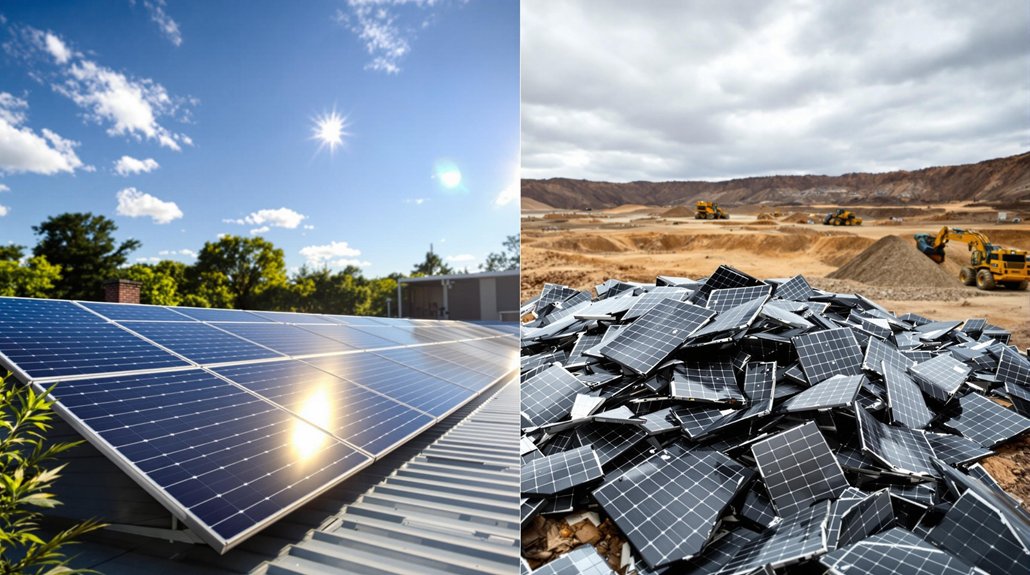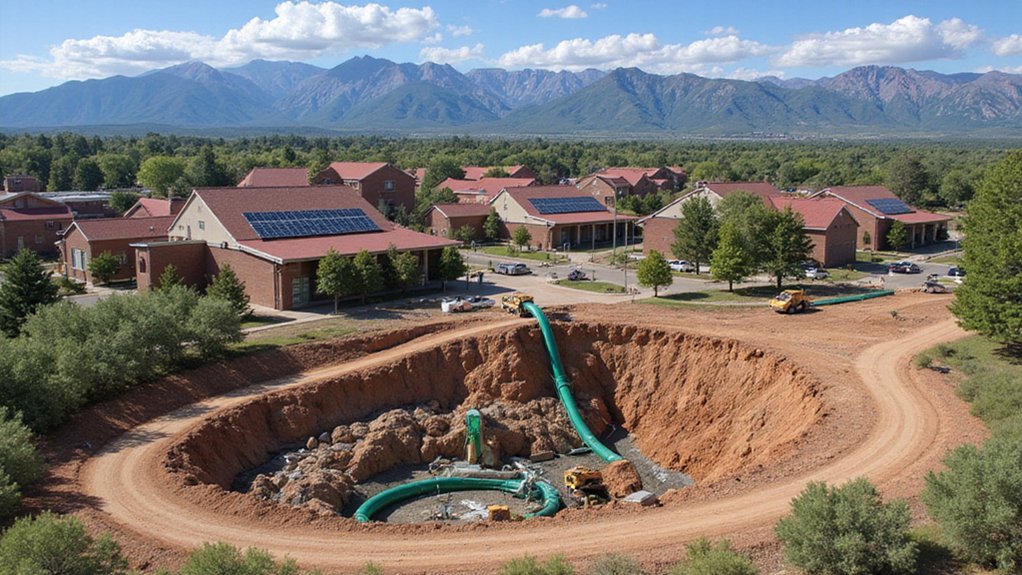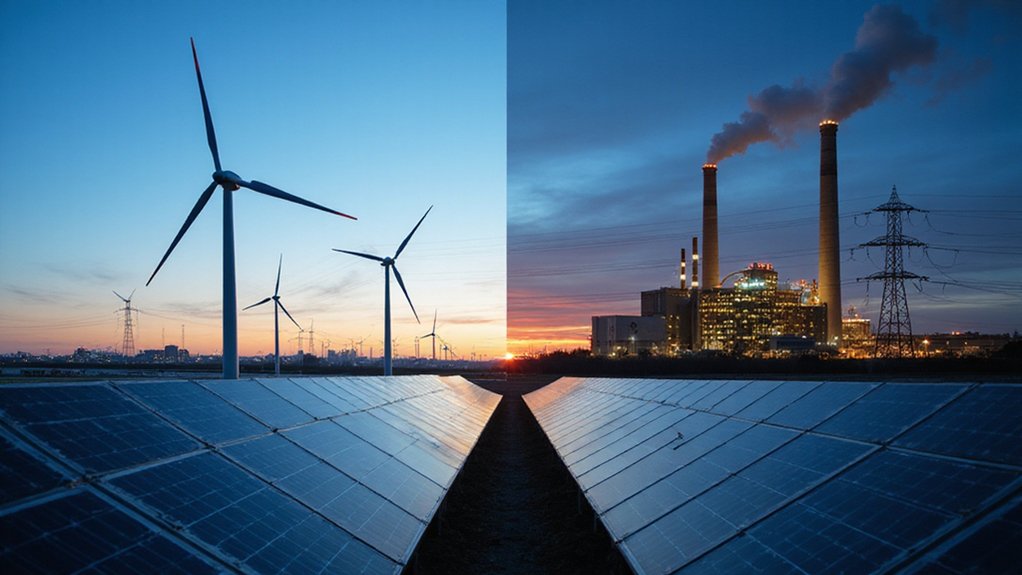Solar panels represent both promise and problems for our environment. They generate clean electricity once installed, helping reduce greenhouse gas emissions. But manufacturing these panels requires mining rare materials, which can damage ecosystems. The panels also create a carbon footprint before they ever produce power. With solar waste growing as older panels reach end-of-life, questions about toxic materials and recycling solutions remain. The environmental math isn’t as simple as it first appears.
Solar Panels: Green Solution or Hidden Environmental Burden?
As the world seeks clean energy solutions, solar panels have emerged as both promising saviors and potential environmental burdens. These renewable energy devices capture sunlight and convert it to electricity without the ongoing emissions associated with fossil fuels. They produce about 12 times less carbon dioxide per kilowatt-hour than natural gas and 20 times less than coal, making them considerably cleaner during operation.
Solar panels help reduce dependence on limited fossil fuels and decrease air and water pollution. When placed on existing structures like rooftops, they preserve natural ecosystems while generating clean electricity. Solar panels reach carbon neutrality after only three years of operation. High-quality solar installations can function for 40+ years with minimal maintenance required. Over their typical 25-year lifespan, they contribute to fighting climate change by reducing greenhouse gas emissions that would otherwise come from conventional power sources.
However, solar panels aren’t completely free of environmental impacts. The manufacturing process requires mining rare earth materials, which can damage ecosystems if not properly managed. Production involves hazardous chemicals and uses considerable amounts of water and energy, creating a carbon footprint before panels even generate their first watt of electricity.
The environmental price of solar power begins long before installation, with resource extraction and manufacturing creating ecological footprints.
There’s also growing concern about waste management as panels reach the end of their useful life. By 2030, the U.S. is expected to generate one million tons of solar panel waste, growing to 10 million tons by 2050. Improper disposal can lead to toxic materials leaching into soil and groundwater.
Large-scale solar farms present additional challenges. They can disrupt habitats and compete with agricultural land use. Following best practices, such as building on already-cleared land, helps minimize these impacts.
Governments worldwide are offering incentives for solar adoption through tax credits and rebates. These policies promote renewable energy while creating jobs in the growing green energy sector. Meanwhile, recycling technologies are improving to recover valuable materials from old panels. A key advantage of solar energy is its ability to generate electricity without requiring water for production, unlike many traditional power generation methods that consume significant water resources.
While solar energy isn’t perfect, its environmental benefits generally outweigh its costs, especially as manufacturing processes improve and recycling capabilities advance. The technology represents an important tool in moving to cleaner energy systems.









